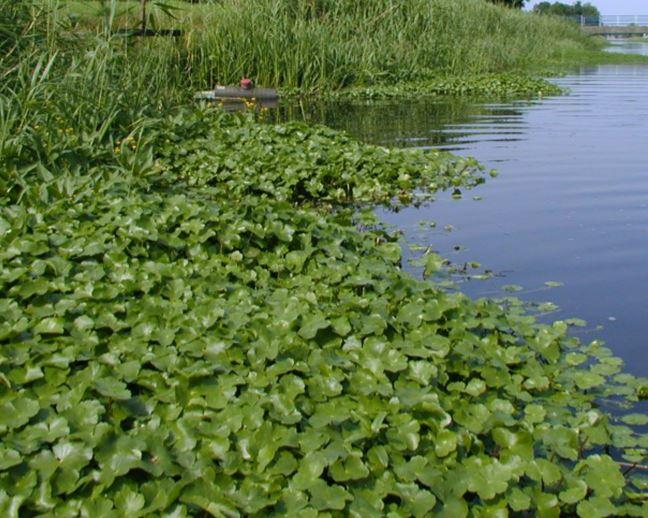
In recent decades, the Dutch flora has seen a sharp increase in exotic species. We call them invasive species or invasives when they cause nuisance by a strong expansion or densification of their area. The nuisance of invasive species can consist of economic damage and health and/or safety problems. Worldwide, invasive species are considered the second most important cause of threat to biodiversity, after habitat destruction.
Many exotic species have entered our country through trade, either intended, for example as garden or aquarium plants, or unintended as stowaways in potted plants or contamination in seed products. Since prevention is better than cure, it is obvious to try to prevent species from entering the Netherlands that are likely to cause problems when introduced.
Inshort
Q-Bank Invasive Plants aims to gather all relevant information about (potentially) invasive plant species to support the work of phytosanitary organizations.
The aim of this project is to provide information on the basis of which an estimate can be made of the likelihood that exotic species will behave in an invasive manner when introduced into the Netherlands. In addition, the goal is to provide assistance in recognizing such species when they are imported. Species that are regulated by third countries (q-species) and could be exported through our country are also included. The focus is on vascular plants (i.e. not algae and mosses), with special attention to freshwater plants, as there are acute problems in this group.
In addition to species covered by European legislation (Union list: EU Exotics Regulation 1143/2014), species are included in the information system that have shown the ability to proliferate in our or similar climate regions. Various digital identification keys, photographs and DNA sequences are available for the identification of these species so that early action can be taken to prevent an invasive species from becoming a problem. In addition, specimens of the species included in Q-bank are physically present in the collections. The descriptions complement the species information (diagnostic protocols, datasheets, distribution maps and PRAs) made available online by other organizations such as CABI and EPPO.
The information system that was initially set up for the Netherlands has now been extended to the North-West European Atlantic zone. It is continuously updated and publicly accessible.
Who workson this project?
Three curators take care of the content of the information system:
- Johan van Valkenburg (NVWA)
- Filip Verloove (National Botanic Garden, Meise, Belgium)
- Leni Duistermaat (Naturalis)
At Naturalis the following people are working on the documentation of invasive species in the Netherlands:
RelatedSubjects
Through the project Signalering Exoten, FLORON informs its volunteers about the most important exotics and how to recognize them and encourages the reporting of observations. In this way NVWA and site managers can keep their finger on the pulse and take action quickly before the situation becomes unmanageable.
Occasional publications of field guides (in 2011 invasive aquatic plants; in 2013 host plants Anoplophora summer characteristics, idem winter characteristics; in 2022 woody invasive exotics).
Naturalis maintains an overview of Dutch biodiversity in the Netherlands Species Register. A separate section has been created for exotic species. The information is compiled by Dutch specialists, including those from the Species Organisations (PGOs).
Moreinformation
Q-bank Invasive Plants database
EPPO-Q-bank Invasive Plants database
Van de Wiel, C.C.M., J. van der Schoot, J.L.C.H. van Valkenburg, Duistermaat, H. & M.J.M. Smulders, 2009. DNA barcoding discriminates the noxious invasive plant species, floating pennywort (Hydrocotyle ranunculoides L.f.), from non-invasive relatives. Molecular Ecology Resources 9: 1086—1091.
Ghahramanzadeh, R., Esselink, G., Kodde. L.P., Duistermaat, H., Valkenburg, J.L.C.H. van, Marashi, S.H., Smulders, M. J. M. & Wiel, C.C.M. van de. 2013. Efficient distinction of invasive aquatic plant species from non-invasive related species using DNA barcoding. Molecular Ecology Resources: 13, 1 (2013) 21—31. doi: 10.1111/1755-0998.12020
Duistermaat, H., Valkenburg, J.L.C.H. van, Speek, T.A.A., Wiel, C.C.M. van de, Smulders, M.J.M., Moorsel, R.C.M.J. van & Lotz, L.A.P. 2011. De ontwikkeling van een informatiesysteem voor invasieve plantensoorten. Gewasbescherming 42(2): 53-57.
Duistermaat, H., Valkenburg, J.L.C.H. van, Pot, R. & Boer, E. (2011) Digitale sleutels en visuele hulpmiddelen ter herkenning van invasieve plantensoorten. Gewasbescherming 42(2): 78-81.
Valkenburg, J. L. C. H. van, Duistermaat, H. & Boer, E. 2013. Image-driven electronic identification keys for invasive plant species in the Netherlands. Bulletin OEPP/EPPO Bulletin 43 (2): 250—254.
Leewis, R., Duistermaat, L., Gittenberger, A., Have, T. van der, Soes, M. & Valkenburg, J. van. 2013. Veldgids Exoten. 191 pp. KNNV Uitgeverij, Zeist.


